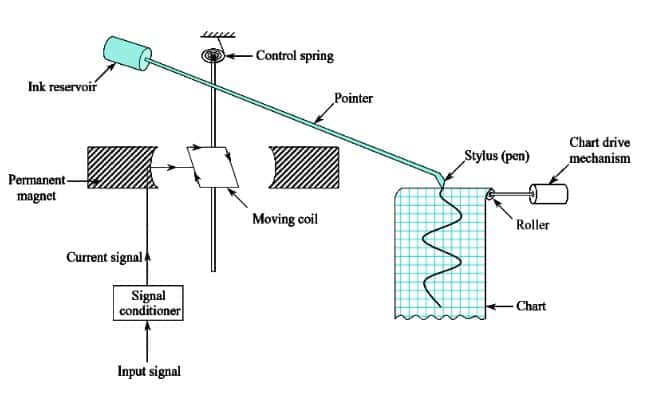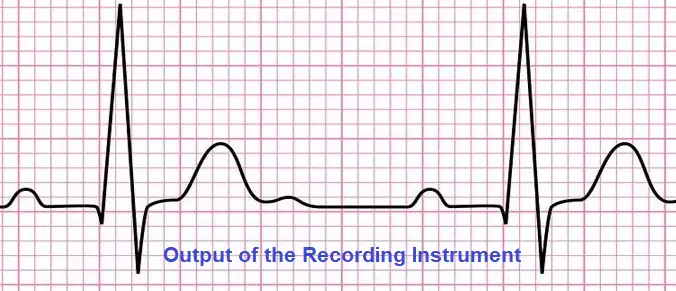The recording instrument records the continuous variation of the magnitude of an electrical quantity for a particular period. They are widely used for those applications where the continuous reading of specific parameters is required. The recorded data is used for future reference for troubleshooting and computational work. The historical data can also be used for the improvement of the process.
The recording instruments continuously plot a graph by taking readings of the physical quantities. We can check the variation of the quantities concerning the time by analyzing the recorded graph.
Recording Instruments Examples
The following instruments are examples of recording instruments.
- Voltmeter,
- ECG (Electrocardiogram) machine
- Thermoscope
- Galvanometer
- Pedometer
- Graphical Temperature Meter
- Fitness Tracker
- Energy Meter
- Storage CRO
- People counter
Working of Recording Instrument

The indicating instrument records an instantaneous reading. However, the past readings are not available. Therefore, to monitor the reading. the operators require a continuous watch to observe the variations in readings. It is possible to convert the indicating instrument into a recording instrument. It can be done by replacing the pointer of the indicating instrument with the light arm ink pen.

The ink pen attached to the pointer deflects according to the variation in the reading, and thus, it plots a graph on the paper. The pen deflects on the graph paper for recording the readings. The pen continuously rotates on the drum at a constant speed, and thus, the path traced by the pen shows a continuous reading of the variable physical quantity.
The magnitude of the quantity can be read from the traced chart. The recording instruments are widely used in power stations where continuous reading is required.
Digital recorders are very popular nowadays. The analog recorders are almost obsolete. The digital recorder stores the measured value in its memory, and we can retrieve the history data of any time slot.